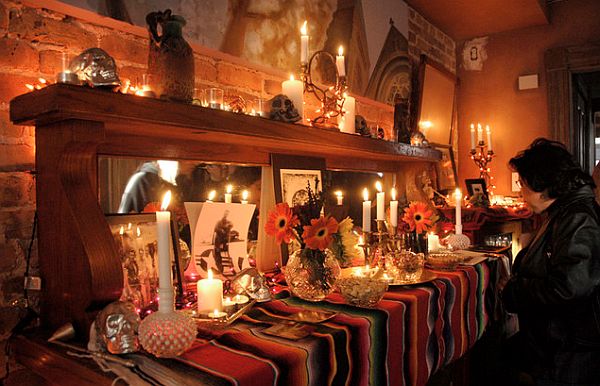


And so for me, it's what got me into the celebration. For him, this day is about his grandpa.įIDEL MARTINEZ: It wasn't until my grandfather passed away a few years ago - I was wholly unprepared to deal with the grief and that loss. KING: Fidel Martinez is an editor on that team, and he says that this idea, which has taken off, grew from a conversation among Latino staffers at the Times. INSKEEP: In the spirit of el Dia de los Muertos, the Los Angeles Times web team built its own sort of altar, which allows readers to upload digital ofrendas along with a couple of lines of remembrance. It's a chance to celebrate the lives of people that we've lost, and one way that's done is by decorating an altar with an image of the person, along with things and food and drink that remind us of their life. 2: Día de Los Difuntos (Spirits of the Adults), continues to honor the spirits of the departed adults.This day is el Dia de los Muertos - in English, the Day of the Dead - which is mainly observed in Latin American cultures. 1: Día de Los Angelitos (Day of the Little Angels), when the spirits of departed children reunite with their families. It's often placed in a bowl and shaped into the pattern of the cross.

Salt: Salt is used as a means to purify the soul and prevent it from being corrupted.Personal objects: This can vary from clothing or a favorite hobby like a book, necklace, toys, etc.Sugar Skulls: Represents death and the sweetness of life.Food can vary depending on what the departed enjoyed. Water and Food: Water is offered to quench the soul's thirst after a long journey, or can be replaced with the loved one's favorite drink.It is said that when the soul arrives, the paper will move and alert the family that they have arrived. Papel Picado: Papel Picado is a colorful cutout paper banner that represents wind.Conversely, others say it represents the transition from the spiritual world into the physical. Copal (incense): Is said to be used to cleanse the air, allowing the spirits to cross with ease.Candles: The candles represent fire and light the path the soul will take to the altar.It is viewed as being hospitable because it feeds the dead after a long journey home. Pan de Muerto (Bread of the Dead): Pan de Muerto is a type of pan dulce (sweet bread) that is decorated with a crisscrossed shape made from dough representing bones.Cempasúchil (marigolds): The bright orange and yellow flower are considered "the flower of the dead." It is said the flowers' fragrance leads souls from their burial to their families' homes.Photographs: Pictures of the deceased are placed on the altar to draw them to cross over.31 to be ready to welcome their loved one.īelow is a list of items to get you started: Ofrendas can be extravagant, creative, or simple but should represent the four elements: fire, wind, earth and water. A notable tradition is the creation of ofrendas, or altars, decorated with photos of the departed, cempasúchil (marigolds), their favorite foods and drinks, candles, incense and personal items belonging to the person being honored. In some countries, families spend the day at the panteon (cemetery) cleaning the grave and decorating it with flowers, food and other tributes. 2 (All Souls Day) and originated in the Aztec culture before the arrival of Spanish colonizers and the Roman Catholic Church. The holiday takes place every year from Oct. SAN DIEGO (KGTV) – Día de los Muertos, or Day of the Dead, is a celebration in Mexico, parts of Latin America and the United States honoring family members who have passed away.


 0 kommentar(er)
0 kommentar(er)
